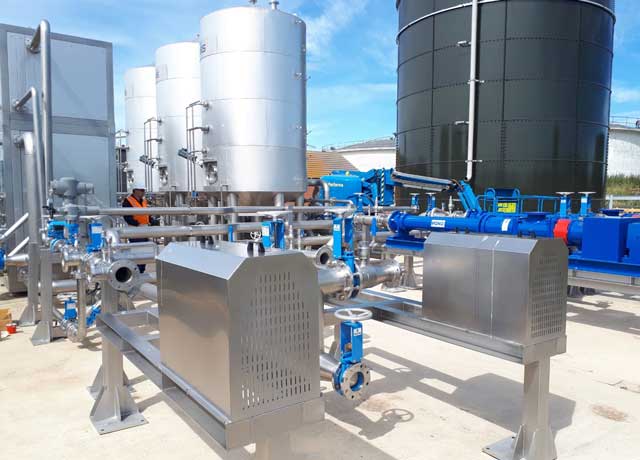Product-to-product heat recovery

Wastewater, sewage, effluents and sludge are useful sources of energy with the potential to heat (or in some circumstances cool) other products or materials in industrial processes. The DTIR Series of double tube heat exchangers from HRS is designed to maximise direct (product-to-product) energy recovery from such low viscosity materials, allowing valuable heat to be recaptured before the effluent enters final treatment or is discharged to the environment.
Making use of any available heat is good for both your pocket and the environment, reducing the energy required for heating, with a corresponding drop in greenhouse gas emissions. Discharging water which is closer to ambient temperatures is also much better for the wider environment. The DTIR Series is specifically designed to use low viscosity products (or waste streams) as the heating (or cooling) medium. The DTIR series is perfect for direct sludge to sludge heat recovery and environmental industry heat recovery.
The tube-in-tube design means that the DTIR series copes well with fluids that contain particles, without the worry of blockages impeding the flow of product or heating medium. Stainless steel corrugated tubes are used to increase heat transfer and reduce fouling, making the DTIR Series more efficient than similar smooth tube heat exchanger designs.
The inner tube of the DTIR Series is removable for inspection, cleaning and maintenance, meaning that both the tube and shell sides can be inspected and cleaned, while the corrugated tube technology improves heat transfer yet reduces potential fouling compared to smooth tube heat exchangers. This allows the product or waste stream to run in both the inner and tubes. It also allows for easier and faster cleaning, so overall there is less operational downtime, even with high fouling products.
For large installations, multiple units can be interconnected and mounted in a frame, and a range of options, including thermal insulation and cladding in materials including stainless steel are available.